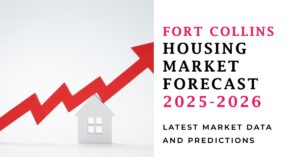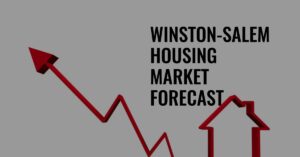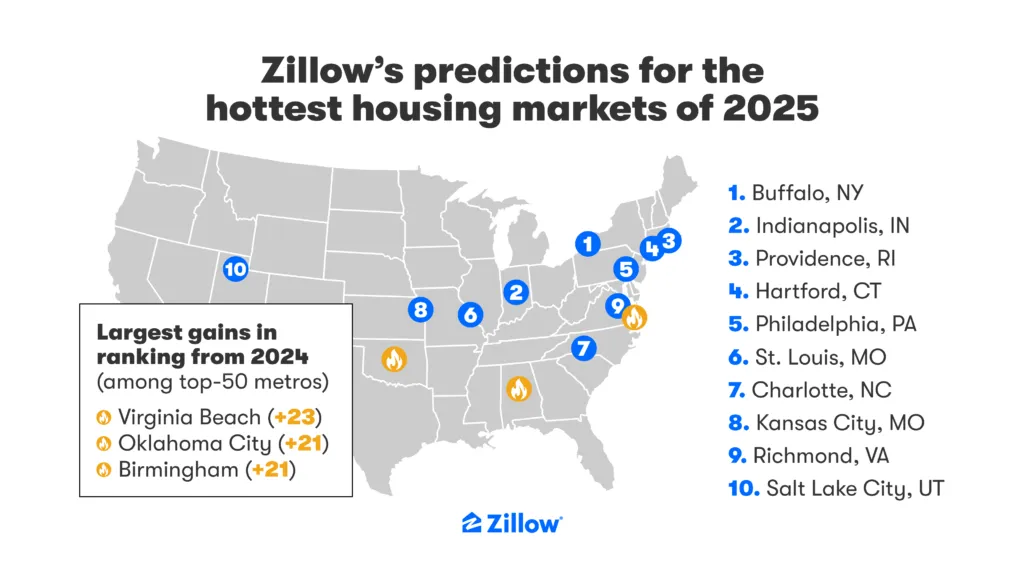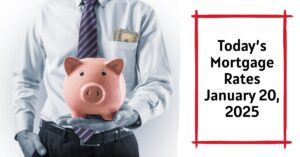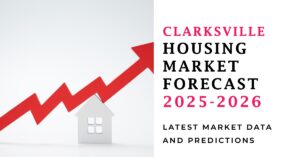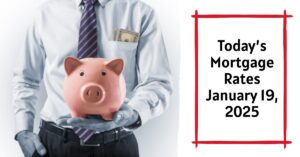Are you trying to figure out what's going on in the Fort Collins housing market right now? Well, you're not alone! The real estate scene here has been a bit of a rollercoaster, and it can be tricky to keep up. So, let's break it down. In short, the Fort Collins housing market is showing signs of a slight cooling, with some increased inventory and a mixed bag of price changes across different property types.
But, it's definitely not a freefall! There's still a good level of activity, and it's crucial to understand the specifics, whether you're buying, selling, or just keeping an eye on things.
Current Fort Collins Housing Market Trends: What You Need to Know
I've spent a lot of time following local real estate trends, and what I’ve seen lately is quite interesting. I know this can all seem a bit overwhelming, so I'm going to walk you through the current trends, using the latest data available from the Fort Collins Board of REALTORS®. Let’s get into it!
Home Sales in Fort Collins
Alright, let’s start with how many homes are actually being sold. It gives us a good sense of how active the market is.
- Single-family homes: In December 2024, there were 183 single-family homes sold, which is a significant 46.4% increase compared to December 2023. That's a big jump! This tells me that even though it's winter, there were still quite a few folks buying homes.
- Townhouses and Condos: The picture is a bit different with townhouses and condos. In December 2024, 56 units were sold, which is a 7.7% increase compared to the same month last year. While still positive, it’s a much smaller increase than single-family homes. This suggests that single family homes were much more in demand in December 2024 than townhouses and condos.
- Year-to-Date: When we look at the entire year of 2024, 2,063 single-family homes were sold, a 3.2% increase from 2023. Meanwhile, 683 townhouses and condos were sold, which is a 2.8% decrease. This indicates that while the market overall saw a slight increase in activity for single family homes, townhouse and condo sales actually fell a little for the whole year.
The fact that single-family sales saw a massive increase in December while townhouses/condos only had a small increase tells me a lot about buyer preferences at that time. In my opinion, it might indicate a preference for more spacious, detached homes during winter.
Home Prices
Now, the big question: what's happening with home prices in the Fort Collins housing market? Here's a breakdown:
- Median Sales Price:
- For single-family homes, the median sales price in December 2024 was $595,000, which is a 1.7% increase compared to December 2023.
- For townhouses and condos, the median sales price was $414,995, which is actually a 4.4% decrease from the previous year. This shows a clear divergence in price trends between these two types of properties.
- Average Sales Price:
- The average sales price for single-family homes was $674,349 in December 2024, a 7% decrease from last year. That's a noticeable drop.
- The average sales price for townhouses and condos was $423,748, a 3.7% decrease from December 2023.
- Year to Date
- The median sales price for single-family homes was $608,000 for the year of 2024, which is a small 1.3% increase from the previous year.
- The median sales price for townhouses and condos was $410,000 for the year, a 1.2% decrease from 2023.
- The average sales price for single-family homes was $709,892 for the year, a 4.4% increase from the previous year.
- The average sales price for townhouses and condos was $426,024 for the year, a 1.2% decrease from 2023.
I find this interesting. Even though median prices for single family homes went up slightly, the average sales price actually decreased in December, which could be due to more sales at lower price points. When it comes to townhouses and condos, it seems like prices have mostly softened both in the short term and long term.
Housing Supply
Next up, let's look at how many homes are available for sale. This is a key factor in understanding the current Fort Collins housing market trends.
- Active Listings:
- For single-family homes, there were 317 active listings in December 2024, which is a 5.4% decrease compared to the previous year.
- For townhouses and condos, there were 162 active listings, representing a 7.3% increase year-over-year.
- It is important to note that while there is a slight decrease in the number of listings for single-family homes, overall supply is much higher than what we saw in 2021-2022 when active listings were at their lowest.
- Months Supply of Inventory:
- The months’ supply of inventory for single-family homes is 1.8 months in December 2024, down 10% from December 2023.
- The months’ supply of inventory for townhouses and condos is 2.8 months, up 7.7% year-over-year.
The fact that the supply of single-family homes has decreased while the supply of townhouses and condos has increased tells me that the market is shifting to possibly have more balance with more options for buyers. However, both the number of months of supply is still low, and therefore indicates a seller's market.
Market Trends
To get a better sense of the market, here are some additional trends I've noticed:
- Days on Market: Homes are taking a bit longer to sell. The average days on market for single-family homes is 84 days in December 2024, which is a significant 23.5% increase from the previous year. For townhouses and condos, it's 76 days, a 28.8% increase. This rise in days on market could mean that buyers have more options and are taking their time to make decisions.
- Percent of List Price Received: For both single-family homes and townhouses/condos, sellers are receiving around 98-99% of their list price, which is very similar to last year. This indicates that there isn't a lot of negotiation happening and sellers are still holding some leverage.
- Housing Affordability Index: The affordability index for single-family homes is 70, which is a 4.1% decrease year-over-year, while for townhouses and condos, it's 100, a 2% increase. The decrease in affordability of single family homes indicates that the average household is finding it slightly more difficult to purchase a home with current prevailing rates. The opposite is true for townhouses and condos.
These trends indicate that while the market is still active, there’s a little bit more wiggle room for buyers than there was previously.
Is It a Buyer's or Seller's Housing Market?
Based on the data, the Fort Collins housing market is still leaning towards a seller's market, but it's not as strong as it once was. Here's why:
- Low Inventory: While inventory has seen some positive increases, the number of months supply of inventory is still under 3, which is still quite low. This means that there are fewer homes available than there are buyers.
- Slight Price Increases: Though there are some price decreases in townhouses/condos, single family homes median price has increased slightly.
- Days on Market Increasing: Homes are sitting on the market longer, but they're still selling within a reasonable timeframe, and buyers aren't seeing major price drops.
So, it's not the crazy seller's market we saw a couple of years ago, but it's still a market where sellers have an advantage.
Are Home Prices Dropping?
This is a common question right now, and the answer is, it’s complicated!
- Single-Family Homes: Median prices have increased slightly, but there has been a decrease in average sales prices. So, it’s a mixed bag. Prices are not dropping consistently.
- Townhouses and Condos: We're seeing decreases in both median and average sale prices compared to last year, which is noteworthy.
In short, home prices are not universally dropping in Fort Collins. Some property types are seeing price decreases, while others are seeing slight gains. This really emphasizes the need to carefully watch the specific property types you're interested in.
Data Summary
Here’s a table summarizing the key data points for easier viewing:
| Metric | Single-Family Homes (Dec 2024) | Change from Dec 2023 | Townhouse/Condos (Dec 2024) | Change from Dec 2023 |
|---|---|---|---|---|
| Sold Listings | 183 | +46.4% | 56 | +7.7% |
| Median Sales Price | $595,000 | +1.7% | $414,995 | -4.4% |
| Average Sales Price | $674,349 | -7.0% | $423,748 | -3.7% |
| Active Listings | 317 | -5.4% | 162 | +7.3% |
| Days on Market | 84 | +23.5% | 76 | +28.8% |
| Months Supply | 1.8 | -10.0% | 2.8 | +7.7% |
| Affordability Index | 70 | -4.1% | 100 | +2.0% |
My Thoughts on Market Data
Based on my analysis, the Fort Collins housing market is definitely experiencing a shift. The massive price increases we saw in previous years have slowed down, and we're seeing more balance coming into the market. It's not a drastic change, but I believe it's a welcome sign for potential buyers.
I think what we're witnessing now is a normalization of the market, after the unprecedented activity of the pandemic years. Sellers are still in a relatively good position, but they can’t expect to get every single thing they ask for. Buyers, on the other hand, have a little bit more negotiating power, and it’s not quite the frenzy it was.
If you’re planning to buy in Fort Collins, I recommend being patient, doing your research, and maybe even exploring different property types. With increasing days on market, you'll have more time to view houses, do your due diligence and make a well thought out purchase. If you're selling, making sure your property is in top shape and pricing it realistically is key to finding the right buyer in a reasonable time.
The current Fort Collins housing market trends show a market that's in transition. While it’s still a seller’s market, there are indicators of more balance being introduced. Prices are not dropping across the board, but some property types are definitely seeing price softening. Keep a close eye on the data and be sure to understand what's happening with the property types you're looking at, whether you're buying or selling!
Fort Collins Housing Market Forecast 2025-2026
You're probably wondering what the future holds for the Fort Collins housing market. Well, here's the scoop: experts are predicting a steady but moderate increase in home values over the next year. So, while we're not looking at a huge price surge, neither is a drop in home values on the horizon. It's all about slow and steady growth.
What the Numbers Say About Fort Collins Home Values
I've been looking at forecasts from Zillow, a big name in the real estate world. Their data gives us a peek into how they expect the Fort Collins housing market to behave. Here's the breakdown:
| Region | Jan 2025 Prediction | March 2025 Prediction | Dec 2025 Prediction |
|---|---|---|---|
| Fort Collins, CO | 0.2% | 0.5% | 1% |
According to Zillow's MSA (Metropolitan Statistical Area) forecast, we can expect a 0.2% increase in home values by January 2025, then a 0.5% jump by March 2025 and then an overall 1% appreciation by the end of December 2025. This suggests a gradual, not dramatic, rise in property values over the year.
How Does Fort Collins Compare to the Rest of Colorado?
It's useful to see how Fort Collins stacks up against other areas in the state. Here's a quick comparison using the same Zillow data:
| Region | Jan 2025 Prediction | March 2025 Prediction | Dec 2025 Prediction |
|---|---|---|---|
| Denver, CO | 0.1% | 0.2% | 0.8% |
| Colorado Springs, CO | 0% | 0.2% | 1.1% |
| Boulder, CO | 0.2% | 0.4% | 0.8% |
| Greeley, CO | 0.2% | 0.4% | 0.9% |
| Pueblo, CO | 0% | -0.1% | 1.7% |
| Grand Junction, CO | 0.6% | 1.6% | 4% |
| Glenwood Springs, CO | 0.1% | 1.2% | 5.7% |
As you can see, the Fort Collins housing market forecast is pretty average compared to other major Colorado cities when it comes to increase in home values. Notably, Glenwood Springs and Grand Junction are showing a much higher price growth forecast. This could be due to a variety of factors, such as limited inventory in these towns and increased interest from people moving out of more populated areas.
Will Home Prices Crash Here?
I get this question a lot, and honestly, I don't see any signs of a housing market crash in Fort Collins in the near future. The moderate growth we're seeing is healthier than the rapid spikes we’ve had before, and also not so low that it can cause a crash. Instead, the market appears to be stabilizing, which is good for everyone involved. The data doesn't point towards any major downturns in the Fort Collins real estate scenario.
What About 2026 for the Fort Collins Housing Market?
Predicting the 2026 forecast is like looking into a crystal ball. I can't give you a definitive number, but based on current trends and my understanding of the market, I anticipate that the Fort Collins housing market will continue on a similar trajectory of steady, gradual appreciation. Interest rates, inventory levels, and the overall economic climate will be key factors in determining what happens after 2025.
Overall, the Fort Collins housing market seems balanced, heading for gradual increase in the value of homes, and I think that's a good thing. For buyers, it means a more stable playing field with less pressure to overpay. For sellers, it means you can expect your property to increase in value, just not at the crazy rates we've seen in the past. It's a good market for real estate, and my personal view is that it should continue in this direction.
Should You Invest in the Fort Collins Real Estate Market?
Northern Colorado city Fort Collins is regarded as one of the most desirable places to reside in Colorado. Fort Collins, with a population of over 170,000, has a thriving economy, exceptional schools, and a thriving culture. Colorado State University is located in the city, which contributes to its vibrant and educated population. All of these factors have made Fort Collins an attractive real estate investment location.
The city's robust rental market is one of the primary reasons why Fort Collins is an excellent real estate investment opportunity. Consistently robust, due to the high demand for housing from students, families, and young professionals. In addition, the city's stringent zoning regulations restrict the number of rental properties, resulting in a limited supply of rental units. This circumstance leads to high rental costs and low vacancy rates.
Fort Collins's housing market has also experienced consistent growth over the years, making it an ideal location for real estate investors. Fort Collins's real estate market is diverse and offers a variety of investment opportunities. Investors have the option of purchasing single-family residences, condominiums, townhomes, and even commercial properties. In addition, the city's robust economy has led to a growing demand for commercial real estate, providing investors with an excellent investment opportunity.
Additionally, investors in Fort Collins benefit from the city's tax policies, making it a low-cost investment option. Colorado has no estate or inheritance tax, and its property tax rates are among the lowest in the nation.
Overall, Fort Collins presents a unique opportunity for real estate investors. With a robust rental market, a thriving economy, and a diverse real estate market, investors can find opportunities that align with their specific objectives.
Top Reasons to Invest in Fort Collins Real Estate
There are several compelling reasons why investing in Fort Collins real estate can be a smart decision. Here are some of the top reasons to consider:
- Strong Market Fundamentals: Fort Collins has a thriving economy, a stable employment market, and a consistently high standard of living. These factors make the area appealing to both renters and homebuyers, thereby assuring a steady demand for real estate.
- Diverse Housing Options: Fort Collins provides a variety of housing options, ranging from affordable apartments to luxury residences, making it an attractive market for investors with varying budgets.
- Proximity to Denver: Fort Collins is a little more than an hour's journey from Denver, one of the fastest-growing cities in the United States. This makes Fort Collins an attractive option for people who work in Denver but prefer a smaller, tranquil community.
- Strong Rental Market: Fort Collins has a robust rental market due to its large student population, as well as its growing number of young professionals and families. This affords investors opportunities to generate consistent rental income.
- Appreciation Potential: Fort Collins real estate has historically appreciated at a consistent rate, and with the city's expanding population and robust economy, there is the potential for future appreciation.
- Favorable Regulatory Environment: Fort Collins has a favorable regulatory environment, with minimal taxes and a streamlined regulatory procedure. This facilitates the acquisition and management of the real estate in the area by investors.
- Outdoor Recreation: Fort Collins is surrounded by stunning natural scenery, including the Rocky Mountains and Horsetooth Reservoir, ideal for outdoor recreation. This makes it a desirable destination for outdoor enthusiasts, which can increase demand for vacation rentals.
Thus, Fort Collins is an attractive location for real estate investors due to its combination of robust market fundamentals, diverse housing options, and lenient regulations.
Read More:
- Colorado Housing Market: Prices, Trends, Forecast 2025
- Colorado Housing Market Predictions 2025: Will Prices Fall?
- Colorado Springs Will be the Hottest Housing Market in 2025
- Housing Market Crisis: Colorado Makes BOLD Move to Fix Affordability
- 10 Affordable Places to Live in Colorado (2025)
- Denver Housing Market: Prices, Trends, Forecast 2025
